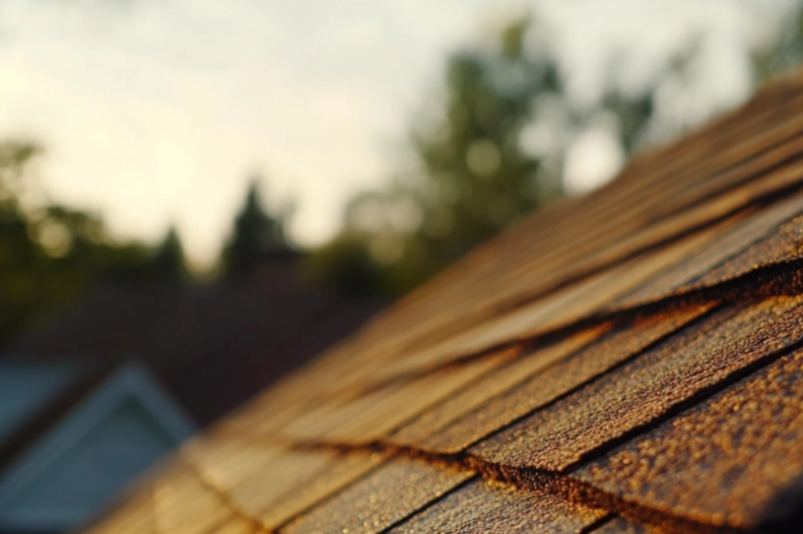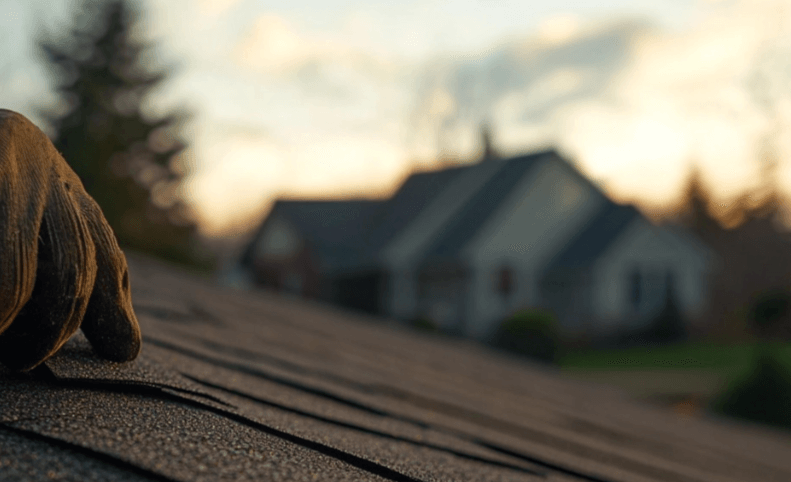
For many homeowners, roofing over existing shingles offers an appealing solution when their roof starts showing signs of age but isn’t damaged enough to require a full replacement. This approach—also known as a roof overlay—skips the labor-intensive tear-off of the old shingles, which can save both time and money.
Whether it’s a matter of budget constraints, a quick-fix solution before selling, or just wanting to avoid the hassle of a full replacement, re-roofing can be a tempting option. However, it’s important to know the potential drawbacks before moving forward, regardless.
The Pros of Roofing Over Existing Shingles
Roofing over existing shingles can be a smart choice in certain situations, providing an economical and convenient way to refresh an aging roof without the hassle of a full replacement. By keeping the existing layer of shingles in place, homeowners can save both time and money, often achieving the look and durability they need without going over budget. But beyond cost, there are several specific benefits to this approach that make it appealing for those looking for a practical roofing solution.
- Cost Savings
Roofing over existing shingles is generally cheaper than a full replacement. Skipping the tear-off process means less labor and fewer disposal fees, which can add up to large cash savings. A roof overlay can be particularly attractive to those on a budget, providing a fresh look and renewed protection without breaking the bank. - Faster Installation
Without the extra step of removing old shingles, installation time is significantly reduced. This can be helpful if time is of the essence, such as when weather conditions are rapidly changing or if an emergency repair is needed. Homeowners get a renewed roof in less time, minimizing disruption. - Less Waste
One of the often-overlooked benefits is the environmental angle—by not tearing off the old shingles, you reduce waste that would otherwise end up in a landfill. For those who are environmentally conscious, this is an added benefit to choosing an overlay.
The Cons of Roofing Over Existing Shingles
While roofing over existing shingles has its advantages, there are also several potential downsides that homeowners need to consider. Although the process may seem simpler and cheaper, it comes with trade-offs that can impact your roof’s durability and overall health. Understanding these drawbacks is crucial for making an informed decision about whether an overlay is the best option for your home.
- Risk of Hidden Damage
When you add a new layer of shingles, any existing problems—like rot, leaks, or mold—can remain hidden beneath. This means you could be layering over underlying damage, which may worsen over time and lead to costly repairs. Without removing the old shingles, it’s difficult to assess the roof deck’s condition, increasing the risk that hidden issues will continue to develop unnoticed. - Reduced Roof Lifespan
Adding another layer can impact the roof’s ventilation, causing heat to build up between the layers. This excess heat speeds up the aging process of the shingles and reduces their lifespan, meaning an overlay generally won’t last as long as a full roof replacement. Over time, you may find that the cost savings of re-roofing don’t hold up if the roof needs replacing sooner. - Weight Concerns
A second layer of shingles adds considerable weight to the roof structure, which may not be suitable for all homes, particularly older ones. Building codes in some areas have weight limits for roofs, and exceeding these can lead to structural stress or even sagging. It’s essential to check with a professional or consult local codes to ensure your roof can handle the extra load safely. - Insurance Limitations
Many insurance companies limit coverage to one or two roof layers, as additional layers increase the risk of structural damage and hidden issues. Adding a second layer may affect coverage, and in some cases, even raise premiums due to the added risk. - Potential Warranty Issues
Many manufacturers’ warranties may not cover roofs that have been re-shingled over existing layers. Adding a second layer can sometimes void warranty protections, leaving you without coverage if problems arise. Checking with both the manufacturer and the contractor beforehand helps clarify any limitations and potential risks to coverage.
When Roofing Over Existing Shingles May Be Suitable

Roofing over existing shingles can be a practical solution in certain circumstances, particularly when budget constraints are a primary concern. This option allows for a cost-effective alternative to a full roof replacement, allowing homeowners to refresh their roof’s protection without incurring the expense of removing old layers.
It’s also appealing for those planning a short-term ownership or aiming to sell soon; adding an overlay gives the roof a visual boost, which enhances curb appeal and meets basic standards without a long-term commitment. For rental properties, this option can quickly address immediate roofing needs without requiring major investment.
That said, this approach works best when the existing roof is in good condition and structurally sound. If the shingles are only showing minor wear from age but aren’t compromised by leaks, rot, or sagging, re-roofing over them can be a suitable choice. However, it’s still wise to consult with a roofing professional. An inspection will confirm whether the current roof can support an overlay safely and whether there are any hidden issues that might lead to future problems if left unaddressed.
Weighing Your Options for the Best Roof Outcome
Roofing over existing shingles can be an attractive option for some homeowners, especially those looking to save on costs or who need a faster solution. It provides a convenient way to enhance a roof’s appearance and extend its protection without the expense and time of a complete replacement.
Ultimately, the decision comes down to the condition of your existing roof, your budget, and your long-term plans for the home. If your roof is structurally sound and you don’t anticipate staying in the home for decades, an overlay might be the right fit. On the other hand, if you want maximum durability and the reassurance of a fully inspected and renewed roof, a complete replacement could be the better investment. Consulting a roofing professional will give you the clearest view of your options, good luck!





